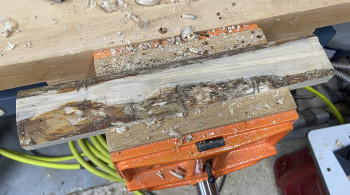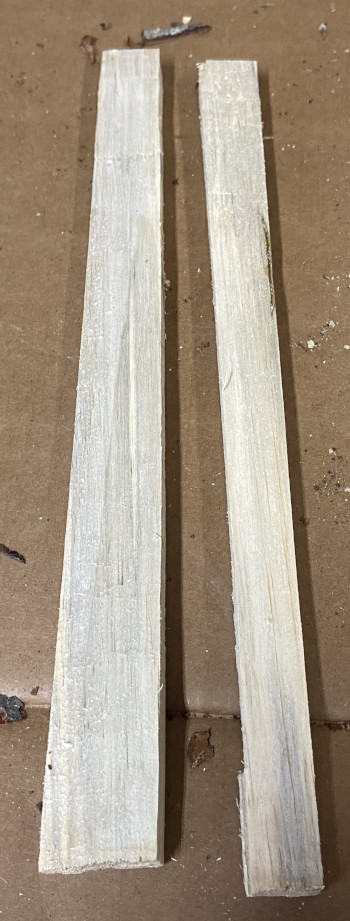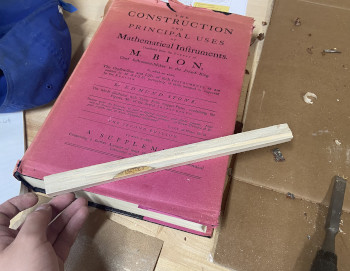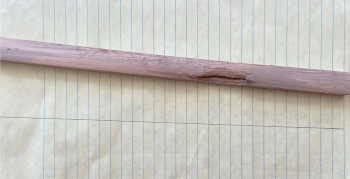Rulers, which are of Brass or Wood, ought to be very strait every way; they are made strait with Files or a Planner, whose Bottom is Steel; as also by rubbing them and another very straight Ruler together: one Side of these Rulers is sloped, to keep the Ink from blotting the Paper.
To know whether a Ruler be very Straight or not, draw a right Line upon a Plane; then turn the Ruler about, and apply the same Edge to the Line; and if the Edge of the Ruler exactly agrees with the right Lane, it is a Sign the Ruler is very strait.
Book I, Chapter I
Note that while Bion refers to this as a ruler, it is not discussed how to put tick marks on them. This is disscussed later as gauging rods and other tools, but for the convinence of the modern reader, that will be on the ruler page.
Using only the above instructions, I set out to make a stick that will let me draw straight lines! The tools referenced are a planer and file, although I ended up switching the file out for modern sandpaper. I figured the effort needed will be about the same. Below is a plank of wood from my backyard, viced up and slowly being planned to flatness. This took quite a few hours, although that is definitely more because I used scrap wood than because of the tools themselves. Trying to make all the edges right to each other was a bit difficult, although technically the only important part is having one nearly perfectly straight edge, so slight imperfections are passable.


After making the block square enough, I cut the board in half. This is mainly because I had enough wood here to make two edges, and two is in fact better than one. I used a simple handsaw, and while not in the description from Bion, it is old enough to have been used by him. I also got a reminder that this board is made of scrapwood, since the grain actually ran at a slight angle to the board. As such, the cut resulted it two angled pieces shown below.

From here, I needed to plane these two sticks aesthetically square once again, and then make one side as straight as possible. The squaring work is the same as above. The fun came from straightnening them up. Bion talked about rubbing two of these together to get their edges in agreement. I attempted this for quite awhile, but found it took too long for bigger defects. Thus, I used sand paper to get the sticks nearly straight, and then rubbed them together again. Still, I am unconvinced this did much to the boards. Luckily, one of the straightedges seemed good enough from sanding to warrant testing.

As Bion mentioned, to test a straightedge we simply draw two lines with it. Draw one line, flip the straightedge 180 degrees and draw a second line over the first. Not much to this, if our straightedge is not straight we would see a bubble form. Below is the result of this test run on our new straightedge, and as you can see it has no bubbles! While this tool is probably far from being perfectly straight, it is definitly good enough for drawing and drafting. This is important as it is our first tool, and will no doubt (along with a compass) be the basis in the entire rest of this book.
